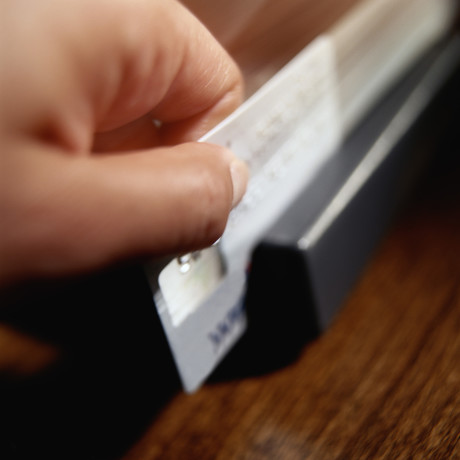Protecting POS terminals from attack

POS (point-of-sale) terminals are not exactly a paragon of data security, with hackers able to complete a physical attack without a great deal of effort. However, this may be all about to change thanks to the rise of three-dimensional moulded interconnect devices (3D-MIDs).
Direct attacks on terminal hardware allow attackers to gain access to sensitive data, such as credit card numbers and PINs. As explained by Thomas Hess, head of sales and project management at Swiss technology company Multiple Dimensions, “Private information is temporarily stored on the devices in order to prevent the loss of data if the internet connection is dropped during the payment transaction.”
Multiple Dimensions is a global expert in 3D-MIDs: technology based on injection-moulded plastic components, to which conductive traces are applied using the laser direct structuring (LDS) process. It is increasingly being used by manufacturers of POS terminals to improve security standards and fend off hacker attacks.
The thermoplastic base material is first compounded with a non-conductive, laser-activated, metal-organic additive. The LDS laser beam structures the trace pattern onto the plastic by cleaving the metal-organic additives while roughening and ablating the plastic precisely where the beam strikes the surface. Copper seeds split out from the additive, attracting free copper in the subsequent metallisation step.
So exactly how do injection-moulded plastic circuit substrates offer greater protection from physical attacks than conventional PCBs?
“To gain access to hardware, most hackers either use probes or mini drills,” said Hess. “Our traces, which are located directly on the inside of the terminal’s protective cap, represent a closed circuit and are positioned so closely to one another that it is more or less impossible for a hacker to gain access without damaging a trace.”
If a trace is cracked, the entire circuit fails. This prompts the POS terminal to shut down immediately, whereby the cached data is lost and the device can no longer be used.
“The benefits of injection-moulded circuit substrates are extremely appealing,” said Hess, noting that “they replace conventional solutions with a plastic carrier and PCBs by integrating the function of the two parts into one MID — thereby combining reduced weight, a smaller number of components and low production costs, while at the same time increasing security”.
According to Hess, Multiple Dimensions’ technology has “uniquely small trace width and narrow spacing”, producing traces with spacing of just 150 µm — with the ability to go down to 80 µm. “The tighter the spacing between the individual traces, the more difficult the circuit is to manipulate from the outside,” he noted.
“Thanks to our special technology, we can [also] form three-dimensional parts and then process these using a laser. As such, even rounded edges are no longer a problem. Even raised sections and transitions, which can be a real challenge for basic PCBs, can be processed without any issues.”
3D-MID technology has several potential applications, with Multiple Dimensions currently collaborating with manufacturers of POS systems as well as motor vehicles, white goods, consumer electronics and more.
“The more we as a society embrace the trend of ‘miniaturisation’, the greater the need for 3D-MID in our day-to-day applications,” said Hess.
Turning waste wood into biodegradable PCBs
Researchers have developed fully biodegradable printed circuit boards made from lignocellulose, a...
Light-speed analog computing — the future of technology?
Aussie researchers have designed an analog computer circuit which uses radio and microwave...
Scientists build fluid-based chip with brain-like memory
Researchers at Monash University have developed a nanofluidic chip that mimics neural pathways in...








